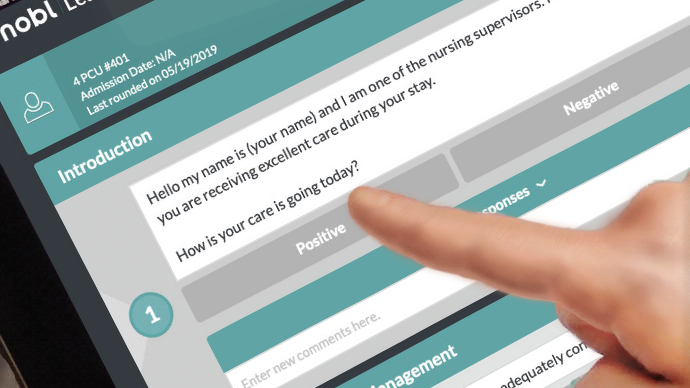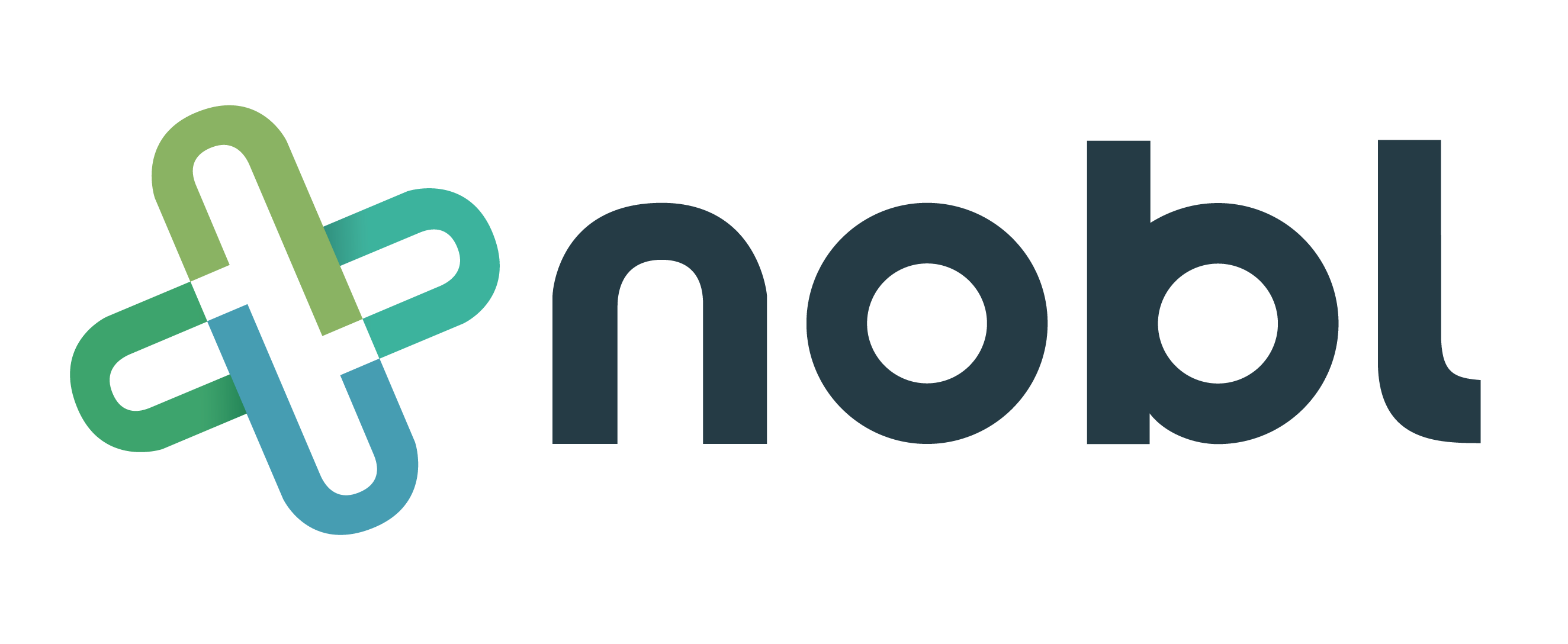
3 min read
Best practices to consider when using tablets to round on patients
Nobl Health May 17, 2019 7:26:00 AM
As more and more hospitals and medical facilities start to use tablets for rounding it is important to know the best practices for using mobile devices in clinical areas. Leader rounding is one of the main types of rounds collected through tablets. Selection, security, sanitation and sensitivity to patient needs are four key elements of tablet usage.
Selection: Choosing the right tablet
There are several considerations while choosing the tablet that is right for your organization.
-
Size. Smaller tablets are great because of their portability; however, users may get frustrated with font size when extensive text is involved. Larger tablets allow for easier reading of lengthier documents, but their weight may be cumbersome for users who have to carry them around on a daily basis.
-
Operating System (OS). Another key aspect to consider is the operating system. Your IT department might set a facility standard for the preferred system. If there is no required standard, your IT department is a great resource to discuss the pros and cons of each OS for your organization. Familiarity with a certain system would be advantageous. Most applications, including the Nobl Rounding Platform, will work on both iOS and Android operating systems, but there may be some programs that may not work on one or the other. When documenting rounds, staff may want to use the speech to text capabilities of the tablets. Though both operating systems have that capability Apple’s system has a more intuitive interface.
-
Value. If desired applications work on either system, but the majority of staff prefer to use one or the other OS, the added time learning the new system must be weighed against the purchase price, technical support, and durability of the product.
Security: Keeping your device safe

Since rounding often includes sensitive patient information, good security is important.
-
Location. Keeping the tablet in a secure but accessible place is crucial. When not in use the tablet should always be in a locked drawer or office. Many organizations keep them near the nurses’ station, in medication storage closets, or administration offices. When determining the optimal place to store the tablet you should consider the frequency of the rounding that will be taking place and the number of different users.
-
Automatic Log-Off. One of the simplest things that you can do to prevent unauthorized users accessing information on the tablets is to have them automatically log users out after a period of inactivity.
-
Clear Usage Protocols. Making sure there are clear protocols for tablet usage to stop theft or breach of information is critical. If there is no reason for staff to be taking the tablets out of or to other areas of the facility, make sure that is clearly stated. Equipping devices with RFID tracking might provide alerts if devices are removed from approved areas.
-
Remote Data Wipes. Setting up remote data wiping is crucial to ensure that patient information is safe even if a tablet is lost or stolen. This stops any potential breach of information before it can happen.
Sanitation: Keeping your patients safe

Tablets are under the lowest restrictions for disinfection by the Center for Disease Control (CDC), but what does that mean for you? Follow these accepted, minimal standards.
-
Disinfect a minimum of once daily.
-
For multi-user devices, the tablet should be cleaned between users.
-
Staff should follow good handwashing protocols while using the tablet, as one would with any other device being used in patient care areas.
-
Follow manufacturer recommendations for approved disinfectants that are safe for your device. Different chemicals require different surface contact times to be effective.
Clinicians should always use their best judgment when taking any device into a patient care area. Teresa (Terry) Anderson, Nobl CNO reminds us that “universal precautions and infection prevention practices should always be a top priority for every caregiver. This is especially true when there is a higher risk of spreading a disease, such as during flu season or when the patients in the area are immunocompromised. We have an obligation to keep them safe.”
Sensitivity to patient needs: Bedside rounding protocol

-
Visually Identifying the Tablet. Visually differentiating the tablet for rounding purposes is a great way to show the patient that you are focusing on their care. Adding a sticker or decal to the back of the tablet that clearly differentiates the tablet from your department or for rounding gives patients a heads up as you enter the room.
-
Explaining the Tablet. As you begin the first patient round, inform the patient why you are using the tablet. Be sure they know that the tablet is to document accurately what they are saying and to help to give them exemplary care.
-
Maintaining Eye Contact. Maintaining eye contact with the patient when possible also shows the patient that you are listening to what they are saying.
Terry cautions all tablet users “if at any time a patient feels that the device is more important than they are during the round the opportunity to engage with that patient and family is missed. If using a mobile device does not come natural, a rounder can start with key words or phrases while in the room and then expand those notes after leaving the room.”
New Free eBook
Best Practices for Sharing and Reviewing Data from the Nobl Rounding Platform
Beryl Institute Case study
Improved First Impressions at Your Front Door - Patient Ambassador Rounders Enhance the Patient Experience of a Busy Emergency Department
Recent Posts

Five Key Factors to Consider in Pediatric Leadership Rounding



